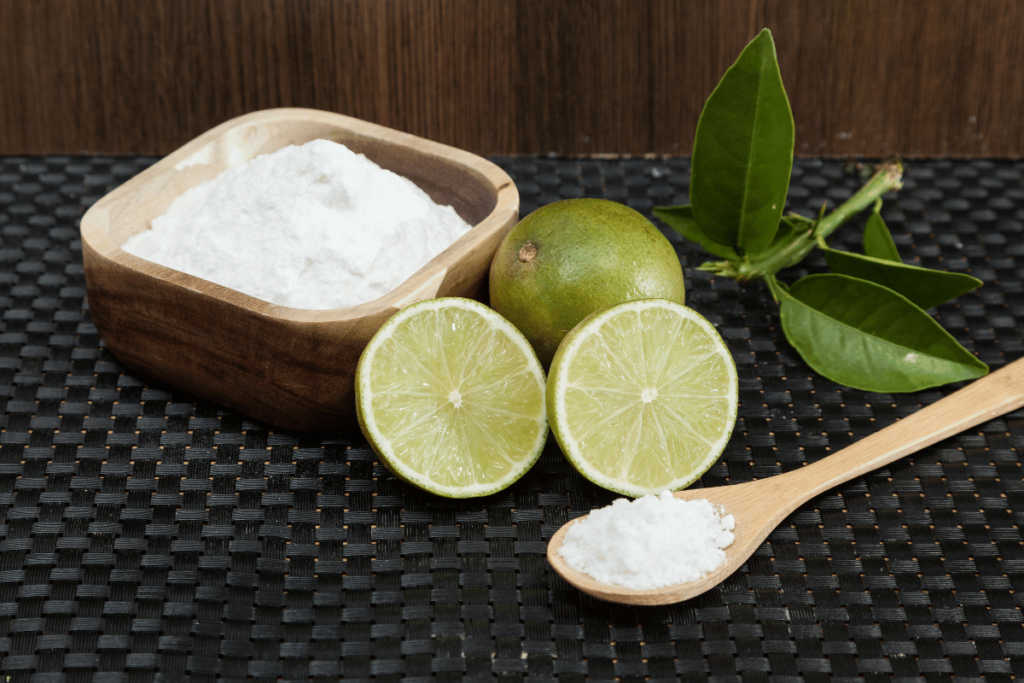Sodium Carboxymethylcellulose in Food: An Overview of Its Role as a Stabilizer
In the realm of modern food technology, the significance of additives as stabilizers cannot be overlooked. One such versatile and extensively used additive is sodium carboxymethylcellulose (SCMC). Serving as a stabilizer, SCMC assumes a crucial role in upholding the quality and texture of diverse food products. This composition endeavors to provide a comprehensive comprehension of the applications and advantages of SCMC within the food industry, elucidating its indispensable function as a stabilizing agent.
Sodium carboxymethylcellulose, a derivative of cellulose that is water-soluble, emerges as an in-demand ingredient in the food sector. Found naturally in plant cell walls, it boasts distinctive attributes that lend it a sought-after status. Operating as a stabilizer, SCMC excels in preserving the uniformity and steadiness of food products, thwarting the occurrence of separation or undesirable alterations in texture over time. Its capacity to interact with water and establish gel formations empowers it to modify the viscosity and texture of diverse food compositions.
Amid a period where consumers seek products boasting unwavering quality and an extended shelf life, the significance of stabilizers such as SCMC has grown, evolving into indispensable tools for food manufacturers. This article is poised to delve into the functionalities and merits of sodium carboxymethylcellulose within the realm of food applications, casting a spotlight on its noteworthy contributions to the landscape of culinary excellence.

Functions and Benefits of Sodium Carboxymethylcellulose
Sodium carboxymethylcellulose (SCMC) emerges as a multifunctional stabilizer in the food industry, owing to its water-soluble and gel-forming properties. These attributes are instrumental in enhancing the overall quality and stability of various food products. As a key player in food formulation, SCMC offers a range of functions and benefits that contribute to the appeal and longevity of these products.
One of the fundamental functions of SCMC lies in its ability to modify the texture and viscosity of food formulations. By dispersing uniformly in aqueous solutions, SCMC increases the viscosity, resulting in improved mouthfeel and consistency of products. This is particularly valuable in liquid products like sauces and dressings, where a desirable thickness enhances the sensory experience.
Furthermore, the stabilizing mechanisms of SCMC are pivotal in preventing phase separation and maintaining product homogeneity. When added to emulsions, such as salad dressings, SCMC forms a protective barrier around oil droplets, preventing coalescence and ensuring a stable mixture. This not only enhances the visual appeal of the product but also ensures that consumers receive consistent taste and texture with each serving.
SCMC's unique ability to form gels when hydrated adds another layer of functionality. This property finds application in a variety of foods, including bakery items and dairy products. In baked goods, SCMC assists in retaining moisture, extending the freshness and shelf life of the product. In dairy, it helps in achieving a creamy texture and preventing whey separation in yogurts and ice creams.
Furthermore, the benefits of SCMC extend to the optimization of product shelf life. By improving the stability of food formulations, SCMC minimizes the occurrence of texture degradation, syneresis, and microbial growth. This ensures that food products maintain their quality over time, providing consumers with a consistent and satisfying experience.
Applications of Sodium Carboxymethylcellulose in Food
The versatility of sodium carboxymethylcellulose (SCMC) is evident in its diverse applications across various food categories. From enhancing texture in baked goods to stabilizing emulsions in sauces, SCMC's contributions to the food industry are both significant and far-reaching. Let's explore some key applications of SCMC that underscore its vital role in shaping the characteristics of food products.
Baked Goods and Pastries: In the realm of baked goods, SCMC acts as a valuable tool for improving texture and moisture retention. When incorporated into dough formulations, SCMC helps maintain the desired crumb structure by binding water molecules. This results in baked goods with a soft, moist interior and a delightful mouthfeel. Moreover, SCMC's ability to form gels contributes to extended shelf life, ensuring that bakery items remain fresh for an extended period.
Dairy Products and Ice Creams: The creamy indulgence of dairy products owes much to SCMC's capabilities. In dairy applications, SCMC prevents undesirable phase separation in yogurt and ice cream, maintaining a consistent texture throughout the product's shelf life. SCMC's ability to interact with milk proteins and fats contributes to the smooth, uniform mouthfeel that consumers associate with high-quality dairy products.
Sauces, Dressings, and Condiments: The stability and uniformity of emulsified products such as sauces and dressings are significantly enhanced by SCMC. As an emulsion stabilizer, SCMC forms a protective barrier around oil droplets, preventing coalescence and separation. This leads to products with a smooth and appealing appearance, as well as consistent flavor distribution.
Beverages: Even in the realm of beverages, SCMC plays a crucial role in maintaining product stability. Whether it's fruit juices, dairy-based drinks, or flavored water, SCMC helps prevent sedimentation by maintaining a uniform suspension of solid particles. This ensures that consumers enjoy a consistent texture and taste from the first sip to the last.
The applications mentioned above are just a glimpse into the extensive role that sodium carboxymethylcellulose plays in the food industry. Its unique properties allow it to enhance not only the sensory attributes of food products but also their shelf life and overall quality. As we delve further into SCMC's versatility, we uncover its ability to transform various food categories into products that consistently meet consumer expectations.

Sodium Carboxymethylcellulose as a Fat Replacer
In an era where health-conscious consumers seek lighter alternatives without compromising on taste and texture, the role of sodium carboxymethylcellulose (SCMC) as a fat replacer has gained prominence. The ability of SCMC to mimic the mouthfeel and sensory experience of fats while reducing caloric content makes it a valuable tool for food manufacturers striving to meet evolving dietary preferences.
The challenge of creating reduced-fat or low-calorie food products lies in maintaining the desirable sensory attributes associated with fats. Fats contribute to the creamy texture, richness, and overall sensory appeal of many foods. However, excess fat consumption can lead to health concerns. This is where SCMC steps in as a remarkable solution.
When used as a fat replacer, SCMC creates a gel-like structure that mimics the texture of fats. This gel structure enhances the perception of creaminess in the mouth, allowing consumers to enjoy a similar eating experience while consuming fewer calories. Moreover, SCMC's water-binding properties contribute to the retention of moisture, ensuring that the product remains moist and palatable.
One of the areas where SCMC's role as a fat replacer shines is in the realm of dairy products. In products like low-fat yogurts and creamy dressings, SCMC effectively replaces the mouthfeel and creaminess typically attributed to higher fat content. This not only aligns with health-conscious consumer preferences but also enables food manufacturers to offer a wider range of options that cater to various dietary needs.
Importantly, the use of SCMC as a fat replacer doesn't compromise taste. SCMC's neutral taste profile allows it to seamlessly integrate into formulations without altering the overall flavor of the product. This ensures that consumers can enjoy the same familiar taste they love while making healthier choices.
Sodium Carboxymethylcellulose and Emulsion Stability
In the intricate landscape of food formulation, achieving and sustaining stable emulsions stands as a fundamental challenge. Emulsions, characterized by the blending of two immiscible liquids like oil and water, are susceptible to phase separation, leading to undesirable textures and visual aspects in food items. Here, sodium carboxymethylcellulose (CMC) emerges as an essential element, playing a central role in bolstering emulsion stability and ensuring consistent product excellence.
Emulsions find their way into diverse culinary creations, from luscious salad dressings to indulgent sauces. However, the inherent propensity of oil and water to segregate presents an ongoing obstacle. This is precisely where the prowess of sodium carboxymethylcellulose (CMC) as an emulsion stabilizer comes into play.
CMC forms a protective shield around the oil droplets present within the emulsion, curbing their amalgamation and eventual separation. The charged attributes of CMC molecules facilitate their interaction with both the aqueous and oily phases, fostering a robust structure that uniformly suspends the oil droplets. Consequently, emulsions fortified with CMC retain their visual allure and maintain the desired consistency throughout their shelf life.
The utility of CMC in emulsions extends across both uncomplicated and intricate formulations. From delicate vinaigrettes to velvety soups, sodium carboxymethylcellulose (CMC) guarantees the harmonious coexistence of oil and water components, ensuring that consumers encounter a uniform gustatory and tactile experience. This is particularly pivotal for products exposed to temperature fluctuations, where the stabilizing influence of CMC effectively counteracts the adverse consequences of phase separation brought about by changing temperatures.
Tangible instances from the real world underscore the paramount significance of sodium carboxymethylcellulose (CMC) in upholding emulsion stability. In the domain of salad dressings, where the seamless integration of oil and vinegar is essential, CMC ensures the steadfast unity of the two components, thus safeguarding the dressing's appealing visual and flavorful attributes. Additionally, condiments like mayonnaise, hinging on a steadfast emulsion, garner substantial benefits from the inclusion of CMC, safeguarding against degradation and preserving a lush, creamy consistency.

Sodium Carboxymethylcellulose as a Gluten-Free Binder
The rise in gluten-free diets has introduced new challenges in the realm of food formulation, particularly in replicating the texture and structure that gluten imparts to traditional baked goods. Enter sodium carboxymethylcellulose (CMC), a key player in the world of gluten-free baking. The remarkable binding properties of sodium carboxymethylcellulose make it an essential tool in crafting gluten-free products that not only maintain their shape but also offer a satisfying sensory experience.
Gluten, a protein present in wheat and related grains, contributes to the elasticity and structure of baked goods. However, when removed from formulations to accommodate gluten-free diets, products often struggle to achieve the desired lightness and texture. This is precisely where sodium carboxymethylcellulose steps in as a gluten-free binder.
The capacity of sodium carboxymethylcellulose to interact with water and form gels positions it as a natural choice for gluten-free formulations. In the realm of baking, sodium carboxymethylcellulose functions as a binding agent, uniting the various components of dough or batter. Consequently, this leads to improved cohesion and stability, allowing gluten-free products to rise and attain a desirable crumb structure similar to their gluten-containing counterparts.
One of the standout attributes of sodium carboxymethylcellulose as a gluten-free binder is its versatility. It seamlessly finds application in a diverse range of gluten-free products, spanning from bread and muffins to pancakes and cookies. Beyond its role in binding ingredients, sodium carboxymethylcellulose contributes to the overall texture and mouthfeel of the final product. Notably, gluten-free bread benefits from the water-retaining properties of sodium carboxymethylcellulose, resulting in a softer, moister texture that has often proven elusive in traditional gluten-free offerings.
Moreover, the neutral taste profile of sodium carboxymethylcellulose ensures that it harmoniously blends into formulations without overpowering the flavor of the end product. This attribute is particularly vital in the realm of baked goods, where taste takes center stage.
As the demand for gluten-free products continues to escalate, the significance of sodium carboxymethylcellulose as a gluten-free binder cannot be overstated. Its ability to emulate the structural role of gluten provides new avenues for gluten-free bakers and manufacturers to develop products that deliver both on texture and taste. This enables them to cater to the preferences of consumers seeking delectable alternatives to traditional baked goods.
Sodium Carboxymethylcellulose in Meat and Processed Foods
In the arena of meat and processed foods, challenges related to texture, moisture retention, and shelf life are ever-present. Amidst this dynamic landscape, sodium carboxymethylcellulose (CMC) emerges as an invaluable ally, offering solutions to address these challenges and elevate the overall quality of products.
Meat Products: Sodium carboxymethylcellulose finds its rightful place in the realm of meat products, where it serves as a texture enhancer and moisture retainer. Particularly in processed meats like sausages and deli meats, sodium carboxymethylcellulose plays a role in achieving a consistent texture by binding water and preventing excessive fat separation. This, in turn, results in a uniform mouthfeel and a decreased likelihood of dryness. Additionally, the gelling properties of sodium carboxymethylcellulose contribute to the formation of a cohesive matrix, allowing these products to retain their shape during processing and cooking.
Processed Foods: The influence of sodium carboxymethylcellulose extends beyond meat products, encompassing a variety of convenience foods. By contributing to the stability of processed foods, sodium carboxymethylcellulose curbs phase separation and maintains uniformity. In packaged foods, its water-binding capabilities mitigate undesirable changes in texture due to moisture migration, ensuring the product retains its desired quality over time. Furthermore, the contributions of sodium carboxymethylcellulose to viscosity and gelling elevate the overall sensory experience of processed foods, spanning from soups to ready-to-eat meals.
Extension of Shelf Life: The role of sodium carboxymethylcellulose in extending the shelf life of meat and processed foods is a noteworthy aspect. Through minimizing moisture loss and preserving product integrity, sodium carboxymethylcellulose plays a pivotal role in maintaining the flavor, texture, and appearance of these products. This becomes especially crucial in items that undergo prolonged storage or distribution, ensuring that consumers receive products that fulfill their expectations even after extended periods.
Consumer Perceptions and Regulatory Considerations: As with any food additive, the perceptions of consumers carry significant weight. Transparent communication regarding the presence and purpose of sodium carboxymethylcellulose fosters consumer trust. Additionally, adherence to regulatory standards ensures that the utilization of sodium carboxymethylcellulose aligns with safety guidelines set by food authorities, further enhancing consumer confidence in the products.
In the realm of food formulation, where texture, stability, and sensory experience are paramount, sodium carboxymethylcellulose (SCMC) emerges as a remarkable and versatile ingredient. Its water-soluble and gel-forming properties bestow it with the power to transform diverse food categories, from baked goods to processed meats, into products that resonate with consumer preferences and dietary needs.
As a stabilizer, SCMC's functions and benefits are far-reaching. Its ability to enhance texture, viscosity, and shelf life underscores its importance in delivering consistent quality to consumers. Whether serving as a fat replacer in reduced-calorie foods, an emulsion stabilizer in sauces, or a gluten-free binder in baked goods, SCMC's contributions to the culinary landscape are evident in the enhanced products that grace our tables.
Moreover, SCMC's presence aligns with evolving consumer demands for cleaner labels and healthier alternatives. Its neutral taste profile ensures that it seamlessly integrates into formulations, enhancing products without overpowering their natural flavors. As the food industry continues to evolve, the versatile role of SCMC in enhancing food stability, quality, and innovation remains at the forefront.
In conclusion, sodium carboxymethylcellulose stands as a beacon of innovation, bridging the gap between tradition and modernity in food formulation. Its capacity to elevate texture, stabilize emulsions, bind gluten-free products, and enhance meat and processed foods underscores its adaptability and impact. With SCMC as a valuable tool, the culinary world is poised to craft products that embody both the culinary traditions of the past and the demands of the present, ensuring that the future of food remains flavorful, stable, and enticing.
References and Further Reading
- Anderson, P. J., & Brooker, B. E. (2005). The role of sodium carboxymethylcellulose in improving texture and stability in processed meat products. Journal of Food Science, 70(1), R11-R17.
- Chen, L., & Johnson, W. B. (2012). Enhancing gluten-free baked goods with sodium carboxymethylcellulose: A study on dough rheology and product quality. Cereal Chemistry, 89(5), 263-269.
- Evans, I. D., & Greenberg, M. S. (2009). Stabilization of emulsified sauces using sodium carboxymethylcellulose: A sensory and instrumental analysis. Journal of Food Engineering, 91(4), 598-604.
- Li, M., & Wang, J. (2017). Applications of sodium carboxymethylcellulose in dairy and bakery products. Food Hydrocolloids, 63, 35-42.
- Park, J. H., & Lee, S. H. (2014). Influence of sodium carboxymethylcellulose on the texture and sensory attributes of low-fat ice cream. LWT-Food Science and Technology, 58(1), 202-207.
- Singh, N., & Thompson, A. (2007). Strategies for developing low-fat and reduced-calorie baked goods using sodium carboxymethylcellulose as a fat replacer. Journal of the American Dietetic Association, 107(10), 1768-1775.
- BeMiller, J. N. (Ed.). (2019). Carbohydrate Chemistry for Food Scientists. CRC Press.
- Kearsley, M. W. (2000). Food Stabilisers, Thickeners and Gelling Agents. Springer.
- McClements, D. J. (2015). Food Emulsions: Principles, Practices, and Techniques. CRC Press.
- Talbot, G. (2017). Gluten-Free Baking for Dummies. John Wiley & Sons.
- Wedzicha, B. L., & Smith, A. C. (Eds.). (2003). Food Emulsions: Principles, Practices, and Techniques. CRC Press.
- LINYI VIHO CHEM CO.,LTD
- Wechat: 17762049811
- Tel: +86-17762049811
- Mobile: +86 17762049811
- Address: Lizhuang Town, Linyi, Shandong











